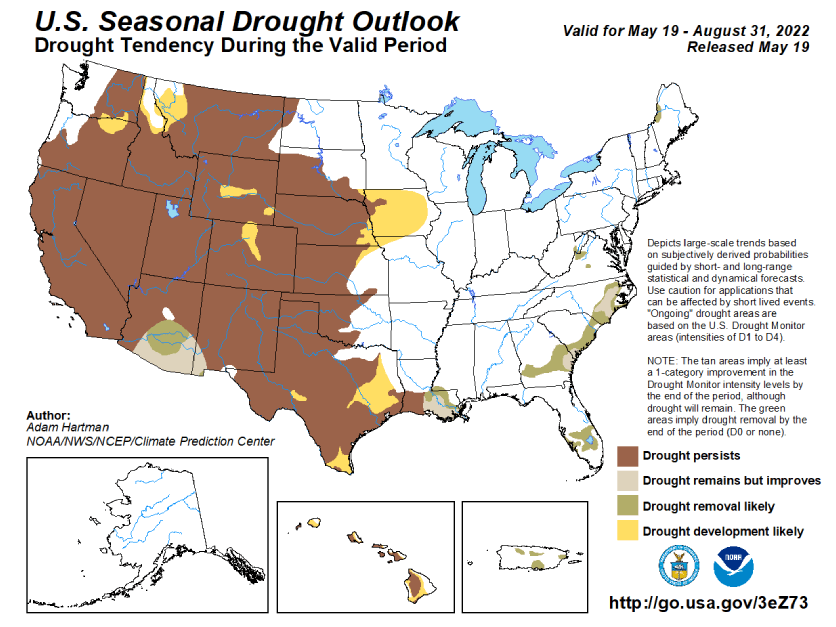Drought conditions that have been concentrated in the West and southern Plains are likely to spread in Iowa, Nebraska, Kansas and South Dakota this summer, according to the U.S. Seasonal Drought Outlook.
Little soil moisture and little indication of rain in the near future could be early signs of a summer drought in parts of the Corn Belt, according to the report released by the National Weather Service's Climate Prediction Center. These conditions are a continuing effect of La Niña, a drought-causing atmospheric phenomenon that stems from cooling waters in the equatorial Pacific.
Nearly all of Iowa, the No. 1 producer of corn and second leading producer of soybeans, could be affected, according to the report.
“That whole western Corn Belt region is kind of teetering right on the edge right now between drought and no drought,” said Brad Rippey, an Agriculture Department meteorologist and the author of the U.S. Drought Monitor, which is updated weekly. “If we were to get a period of high, dry weather, especially in extended periods during the summer months, that could easily push drought back across Iowa.”
Severe drought throughout much of Texas and Oklahoma has already spelled disaster for these states’ winter wheat crops. Over 80% of Texas’s winter wheat crop is rated either “poor” or “very poor” by the USDA, while more than 50% of Oklahoma’s falls into these categories.
Most western states are currently seeing some form of drought as well. Exceptional drought — the term used by the U.S. Drought Monitor’s authors for the most severe form — is currently present in parts of Oregon, Nevada, New Mexico and Colorado. Some areas in California, Utah, Montana, Idaho and Wyoming are seeing extreme drought, the next rung down on the U.S. Drought monitor’s scale.
Rippey said conditions in these western states, along with those in Texas and Oklahoma, will likely get even worse over the summer.
“There is going to be a drier area that’s going to extend from California to the central and southern Great Plains, which happens to be the areas of the country that are experiencing the worst drought right now,” he said. “So, if anything, we may even further sharpen up an already tight drought gradient over the next few weeks.”
North Dakota, which was struck last summer by a severe drought that forced many ranchers to reduce the size of their cattle herds, has seen significant moisture this year and doesn’t appear to have much risk for drought this summer. Minnesota and other states to the east, will likely also see continuing precipitation, Rippey said.
For more news, go to www.agri-pulse.com.


